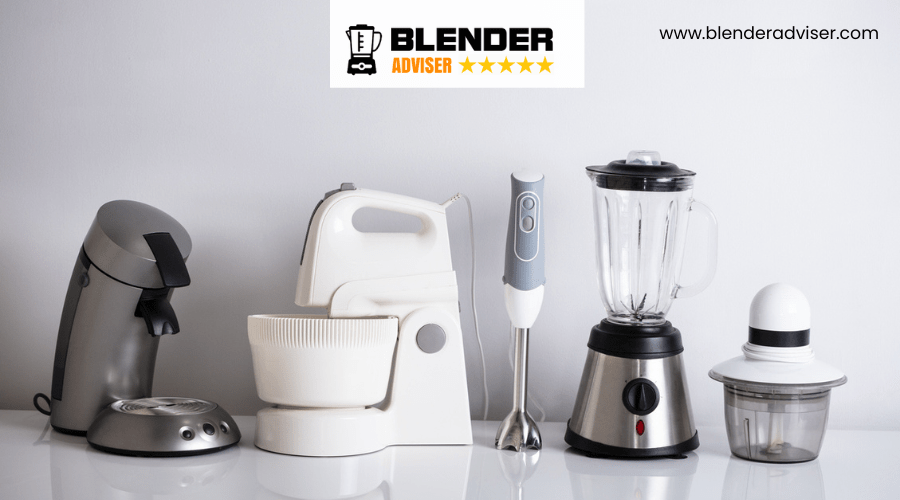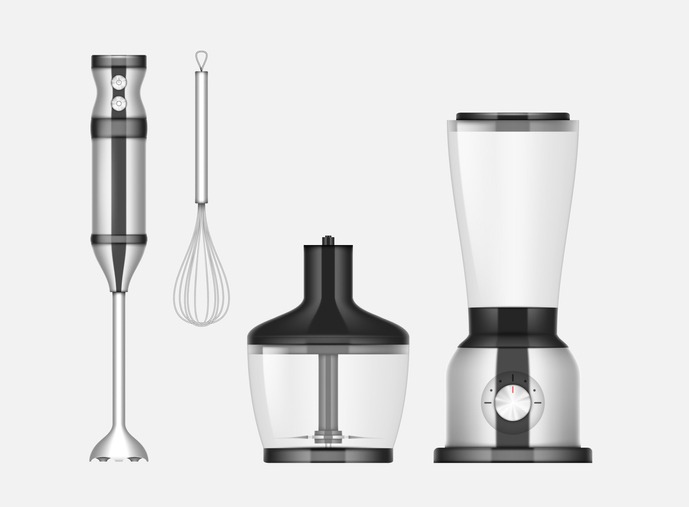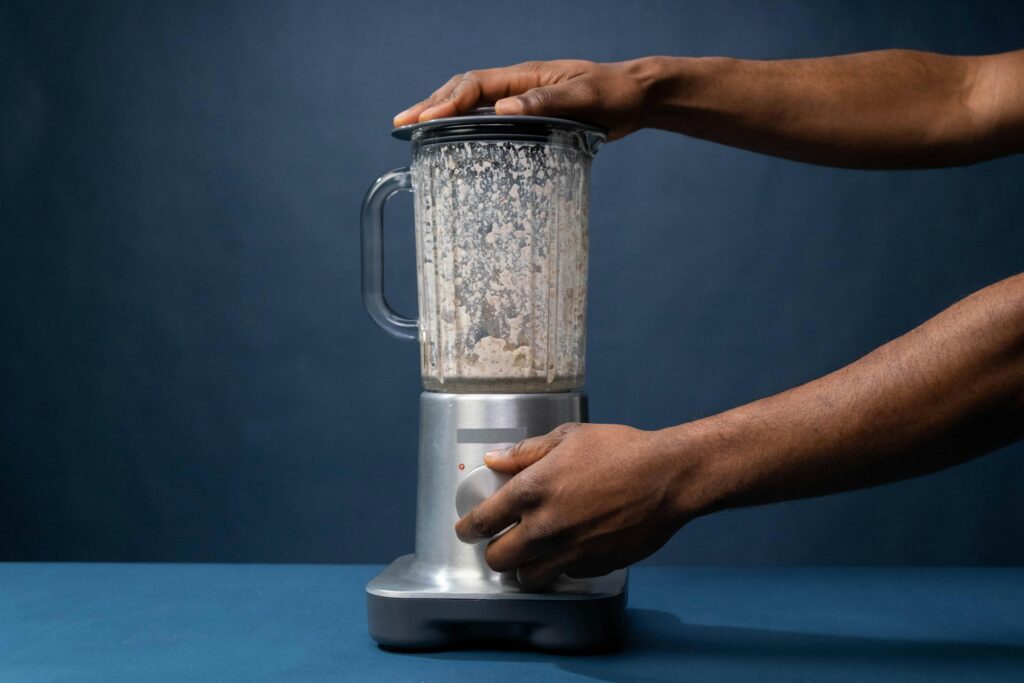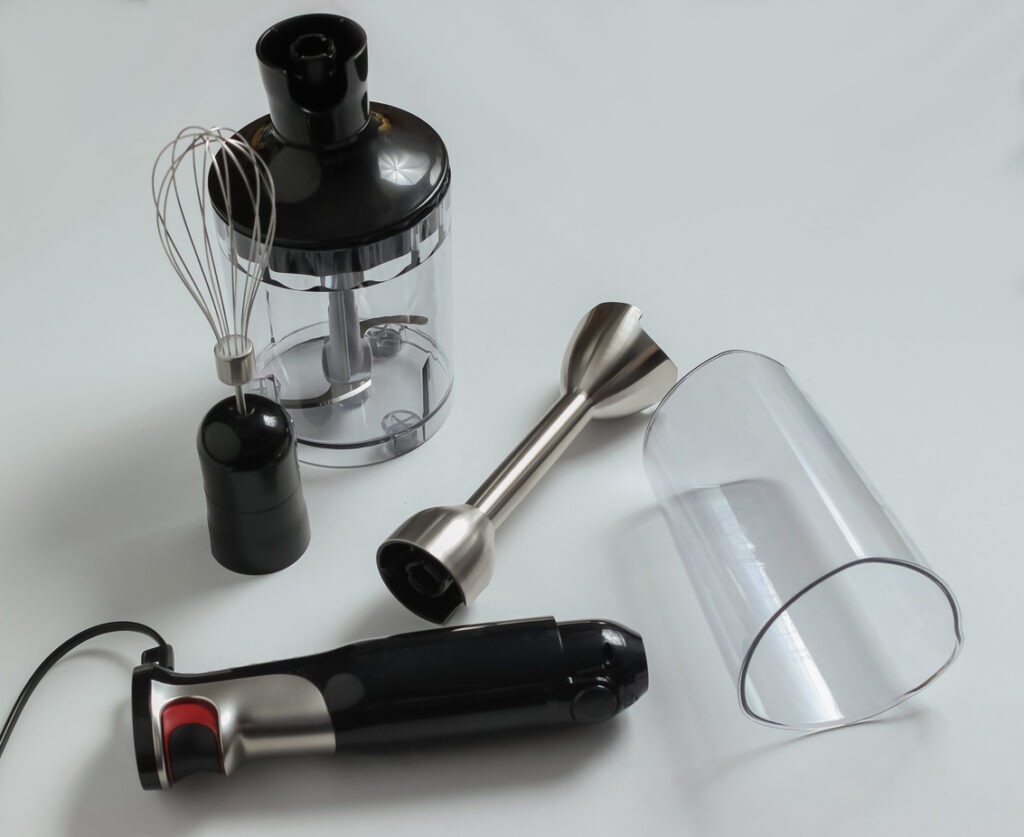Embarking on the journey to find the perfect blender for your kitchen can sometimes feel like navigating through a thick smoothie. You’ve got to consider the size that best fits your counter space and your culinary ambitions, whether it’s whipping up a quick smoothie or preparing a feast. The power and speed of the blender are pivotal, affecting everything from the texture of your soup to the consistency of your crushed ice. And let’s not forget the allure of special attachments and the practicality of price points.
But how do you sift through the myriad of options to find the one that’s just right for you? Stay tuned, and you’ll discover how to match your kitchen needs with the ideal blender, ensuring every blend is just the way you like it.
Understanding Blender Types
To choose the best blender for your kitchen, it’s crucial to understand the different types available: countertop, immersion, and personal blenders. Each type serves unique needs, from whipping up a quick smoothie to blending soups directly in the pot.
Countertop blenders are your go-to for heavy-duty tasks. They’re capable of blending fibrous vegetables like kale, thanks to their powerful motors. Many come with pre-programmed settings for tasks such as ice crushing or making smoothies, and accessories like removable center caps and tampers for added convenience.
Immersion blenders offer versatility with variable speed settings and attachments, including interchangeable blending arms for different tasks. Whether you’re working with a small saucepan or a large pot, there’s likely an immersion blender with a blending arm to match. Plus, they come in both cordless and plug-in options, making them adaptable to your kitchen setup.
Personal blenders are the epitome of convenience for those always on the move. These compact, portable options are quick and easy to use, often coming with travel-friendly cups or bottles, so you can blend and go. Each blender type offers unique benefits, from variable speed settings and attachments to portable options, ensuring there’s a perfect match for your kitchen needs.
Assessing Power and Speed
After understanding the different types of blenders, it’s crucial to assess their power and speed settings based on your culinary needs. For handling tough ingredients like fibrous greens and for efficient ice crushing, consider blenders with at least 500 watts of power. This ensures your blender can tackle a wide range of tasks without bogging down.
Opting for blenders with 3 to 10 speed settings and a pulse button allows for versatile blending options. Whether you’re making smoothies, soups, or sauces, having a variety of speed settings lets you fine-tune the texture and consistency of your creations. Additionally, a pulse button can offer quick bursts of power for added control.
Ensure the blender you choose has sufficient power and speed settings to meet your kitchen requirements effectively. A wide range of speeds accommodates different recipes and ingredients, making your kitchen endeavors more efficient and enjoyable.
| Feature | Importance | Why It Matters |
|---|---|---|
| Power | High | Necessary for tackling tough ingredients |
| Speed Settings | High | Allows for versatile blending options |
| Pulse Button | Medium | Offers quick bursts of power for control |
| Range of Speeds | High | Accommodates a wide variety of recipes |
| 500 Watts | Minimum | Ensures efficiency in blending tasks |
Considering Size and Capacity
When choosing a blender, it’s vital to consider its size and capacity to ensure it fits your kitchen’s space and meets your culinary needs. Blenders come in a range of sizes, from compact single-serve options to larger, family-size blenders. If your storage space is limited, compact single-serve blenders, like the NutriBullet NBR-1201 Blender, priced at around $60, are a great choice. They’re perfect for small kitchens or for individuals who enjoy a quick smoothie or shake without the hassle of cleaning a large jug.
On the other hand, if you often find yourself preparing meals for a group or if meal prep is part of your routine, opting for a larger blender might be the way to go. These larger blenders usually have a blending capacity ranging from 3 to 14 cups, making them ideal for handling larger quantities. The Ninja Professional Countertop Blender, priced at around $100, is an excellent choice for a family-size blender. It’s important to choose a blender with versatile blending options, such as 3 to 10 speed settings and a pulse button, to cater to all your blending needs effectively.
Evaluating Attachments and Features
Beyond size and capacity, it’s crucial to examine the attachments and features a blender offers to truly meet your culinary needs. The right attachments can transform a simple blender into a multi-functional kitchen tool, enhancing convenience and allowing you to perform a variety of tasks with just one appliance.
When evaluating blender attachments and features, consider the following to ensure you choose a versatile blender model that caters to your lifestyle:
- Blending Cup: Look for blenders with personal cups for grab-and-go drinks. This feature is perfect for busy mornings when you need a quick smoothie.
- Chopping/Mixing Bowls: Models with chopping or mixing bowls offer food processing versatility, allowing you to chop vegetables or mix ingredients with ease.
- Coffee Grinder Attachment: A coffee grinder attachment adds value by letting you grind coffee beans or spices, eliminating the need for a separate grinder.
- Double-Duty Appliances: Opt for blenders that serve as double-duty appliances, such as those that can act as both a blender and a food processor, to save space in your kitchen.
Comparing Price and Durability
Considering the wide range of prices from $40 to $600, it’s essential to balance your budget with the durability and performance you expect from a blender. High-priced blenders often promise and deliver on longevity and robust performance. It’s a common observation that you get what you pay for in the world of blenders. Premium brands like Vitamix, which can soar above the $600 mark, are renowned for their endurance. They’re an investment in your kitchen’s future, ensuring you won’t need to replace them anytime soon.
Yet, it’s not just about the sticker price. The warranty length is a critical factor to consider. A longer warranty suggests the manufacturer’s confidence in their product’s durability. It gives you a safety net, a promise of reliability over the years. When you’re comparing blenders, don’t just look at the price tag; delve into the warranty details. This will give you a clearer picture of what you’re truly investing in.
Ultimately, aligning your budget with your expectations for durability and performance is key. Choose a blender that not only fits your financial boundaries but also promises a balance of longevity and efficiency. Whether it’s a high-priced premium Vitamix or a more budget-friendly option, ensure it meets your kitchen’s demands.
Conclusion
In conclusion, picking the right blender for your kitchen boils down to understanding what you need. Whether it’s blending smoothies, preparing meals, or something in between, there’s a blender out there for you. Consider its power, speed, size, and attachments closely. Don’t forget to weigh the price against durability to ensure it’s a worthy investment.
By keeping these factors in mind, you’ll find a blender that not only meets your culinary needs but also fits your lifestyle perfectly.






